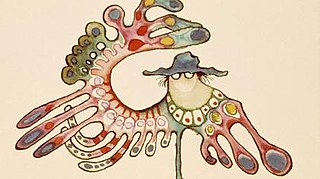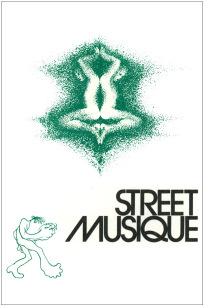Top Qs
Timeline
Chat
Perspective
Street Musique
1972 Canadian film From Wikipedia, the free encyclopedia
Remove ads
Street Musique is a 1972 animated short film by Ryan Larkin produced by the National Film Board of Canada (NFB). It is a line animation of "music as performance",[1] in which actions of the film's characters are choreographed to the music of street musicians.[2]
Soon after returning from the 42nd Academy Awards in 1970, for which his animated short film Walking had been nominated, Larkin was loaned by the NFB to a Vancouver art school, where he stayed for eight months conducting animation workshops.[3] He would travel to each student's studio to direct them, one of which was a group of street musicians.[3] These street musicians were the origin of the idea for the film, as Larkin had stated that "they would make a great focal point for my abstract images".[3]

The film consists of five or six vaguely defined segments whose animation matches the pace of the music to which it is set.[3] It begins with a photograph of a musician that is replaced by a line drawing of that photograph.[4] A transition leads to images of a man's body transforming into abstract improvisational forms using line shading and watercolours.[5][6] The figures undergo a continuous metamorphosis throughout the film.[3] Chris Robinson stated that the film's awkward ending is indicative of Larkin's creative hesitancy, as the last image is a figure waiting for music.[3] Larkin said that he "ran out of ideas" and "didn't know how to end the film".[3]
The film cost $45,734 (equivalent to $304,441 in 2023) to make.[1]
Street Musique won the Grand Prize at the Melbourne International Film Festival in 1973, which included a cash prize of A$2,500 from the Government of Victoria in Australia.[7] The film also received the Jury's First Prize at the Berlin Film Festival of Animated Films.[8][9] Larkin was fond of the Melbourne International Film Festival award because Street Musique "was a ten minute film up against all kinds of complicated feature films".[3] He used the prize money to support young artists in Montreal, to whom he rented his nine-room apartment for CA$100.[10]
In 2000, after having lived on the streets in Montreal and spending his nights at the Old Brewery Mission, Larkin met Chris Robinson.[11][12] During a discussion, Larkin told Robinson that after creating Street Musique, he was bereft of ideas for new projects.[13] Robinson invited Larkin to be a member of the selection committee for the Ottawa International Animation Festival.[14] The other three members were Chris Landreth, Pjotr Sapegin, and Andrei Svislotksi,[15] none of whom were aware of Larkin's identity.[16] After reviewing selections, they screened each other's films.[17] Larkin was last, showing Walking, Street Musique, and Syrinx.[17] Landreth was immediately inspired to create a documentary film about Larkin's life, which became Ryan.[18] The animated documentary incorporated in their entirety Street Musique and Walking.[19] Larkin's character in Ryan is animated to dance with characters from Street Musique.[20]
Remove ads
Awards
- International Week of Animation Cinema, Barcelona: Molinillo de Oro, First Prize, Special Techniques, 1972
- Melbourne International Film Festival, Melbourne: Grand Prix – Gold Boomerang, 1973
- International Short Film Festival Oberhausen, Oberhausen: First Prize of the International Animation Film Jury, 1973
- Columbus International Film & Animation Festival, Columbus, Ohio: Chris Bronze Plaque, 1973
- FIBA International Festival of Buenos Aires, Buenos Aires: Honorable Mention, 1974[21]
Remove ads
Notes
References
Works cited
External links
Wikiwand - on
Seamless Wikipedia browsing. On steroids.
Remove ads

